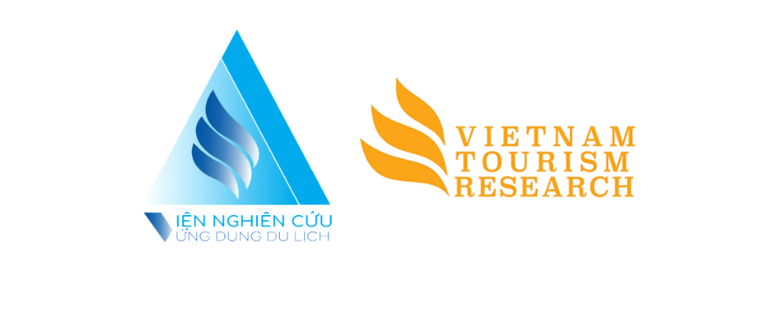This post is also available in:
Tiếng Việt (Vietnamese)
This article provides a detailed examination of financing issues for small and medium-sized enterprises (SMEs) operating in the field of sustainable tourism, which are considered the backbone of the industry. The author analyzes both internal and external challenges faced by SMEs in accessing financial instruments, while surveying existing and innovative financial tools and mechanisms, highlighting the essential role of supportive policies, capacity-building programs, and comprehensive data collection. By presenting case studies from Greece (Costa Navarino) and Mexico (the “Connecta Turismo” program), the article offers practical insights and valuable lessons in promoting sustainable finance for tourism SMEs.
The tourism sector plays a significant role in global economic development and serves as a key domain in achieving the Sustainable Development Goals (SDGs). Programs such as the 10YFP Sustainable Tourism Program have clearly articulated the goal of decoupling tourism growth from increased consumption of natural resources, while supporting the implementation of SDGs such as sustainable employment (SDG 8), climate action (SDG 13), and habitat protection (SDGs 14 and 15). Within this context, tourism SMEs – which make up the majority of the industry’s value chain – face considerable barriers in accessing finance due to limited resources and the lack of financial instruments tailored to the specific characteristics of sustainable business models. In response to this demand, organizations such as the One Planet Network have convened policy forums to seek comprehensive solutions for sustainable development finance.
Challenges and Characteristics of Tourism SMEs in Accessing Sustainable Finance
Tourism SMEs face multiple barriers when attempting to access financial tools for sustainable development. From limited financial resources and a lack of dedicated personnel to being misjudged in terms of risk by the banking system, these businesses often lack the capacity to invest in green projects. In particular, the features of SMEs in the tourism sector – such as small scale, seasonality, lack of collateral, and informal business models – make it more difficult for them to access credit or loans with favorable conditions.
Furthermore, the tourism sector is strongly influenced by demographic factors such as family-run businesses, vulnerable groups, or lifestyle-driven startups, which require financial support accompanied by training, technical guidance, and awareness-raising. In addition, indirect environmental risks, technological transition risks, and a lack of green investment incentives pose significant obstacles. In many cases, sustainable investments are overvalued due to the absence of adequate data for risk assessment.
Financial Tools and Mechanisms for Sustainable Tourism
Financial solutions for tourism SMEs should not be limited to traditional credit but need diversification, including green bonds, sustainable equity capital, credit guarantees, and crowdfunding. Flexible adjustments tailored to the sector – such as seasonal interest repayment mechanisms or loan packages compatible with SMEs’ limited financial capacity – have been implemented in the Bahamas to support better cash flow management. In early-stage ventures, the role of angel investors, community funds, and public guarantees is particularly vital.
The crowdfunding model – especially reward-based crowdfunding – is emerging as an effective tool for community-based and experiential tourism initiatives, enhancing community engagement and linking consumers to local development objectives.
Policy Roles and Technical Support
Sustainable finance for SMEs must be treated as an independent policy integrated into national tourism development strategies. Technical support measures, such as business planning guidance, financial profile development, training in financial management, and cash flow planning, play a crucial role in improving SMEs’ access to capital. In Ireland, accompanying business support tools have demonstrated clear effectiveness in improving loan applications and increasing financial access for small enterprises.
Additionally, policies should encourage SME groups to collaborate into industry clusters to jointly develop proposals, leverage collective strength, and increase access to public credit programs. The role of local governments in training, promoting the use of clean energy, and managing waste is also indispensable.
Data Collection and Standardization
One of the greatest current weaknesses is the lack of reliable data on sustainable finance in tourism SMEs. The absence of unified indicators and standardized evaluations makes it difficult for investors and banks to accurately price risk. Therefore, linking credit with SDG targets, and collecting and analyzing data according to industry segments, is a necessary step to increase transparency and lay the groundwork for designing specialized financial instruments.
International Experience: Costa Navarino (Greece) and Connecta Turismo (Mexico)
The Costa Navarino model has demonstrated that sustainable tourism can be a driver of socio-economic growth when there is effective integration between businesses, communities, and policies. With over €1 billion in direct economic impact in Messinia, Costa Navarino supports 2,288 suppliers, creates thousands of jobs, and promotes local product branding in international markets. Simultaneously, its sea turtle conservation program and the replanting of thousands of ancient olive trees affirm its commitment to habitat protection.
In Mexico, the “Connecta Turismo” strategy not only links local suppliers to the tourism value chain but also coordinates with four development banks to provide appropriate credit for SMEs, ranging from hotel and restaurant services to transportation and food supply. Over USD 435 million in credit has been granted, including preferential loans for women and rural enterprises, demonstrating that policy-bank-community coordination is an effective pathway to sustainable finance.
Sustainable finance for tourism SMEs is not only a tool for capital access but also a key to driving green transformation in the global tourism sector. The existing challenges can be overcome through flexible financial mechanisms, coherent policies, technical assistance, and reliable data systems. International experiences from Greece and Mexico show that cross-sectoral coordination and long-term vision will enable tourism SMEs to contribute more effectively to inclusive and sustainable development, toward a greener future for the global tourism industry.










